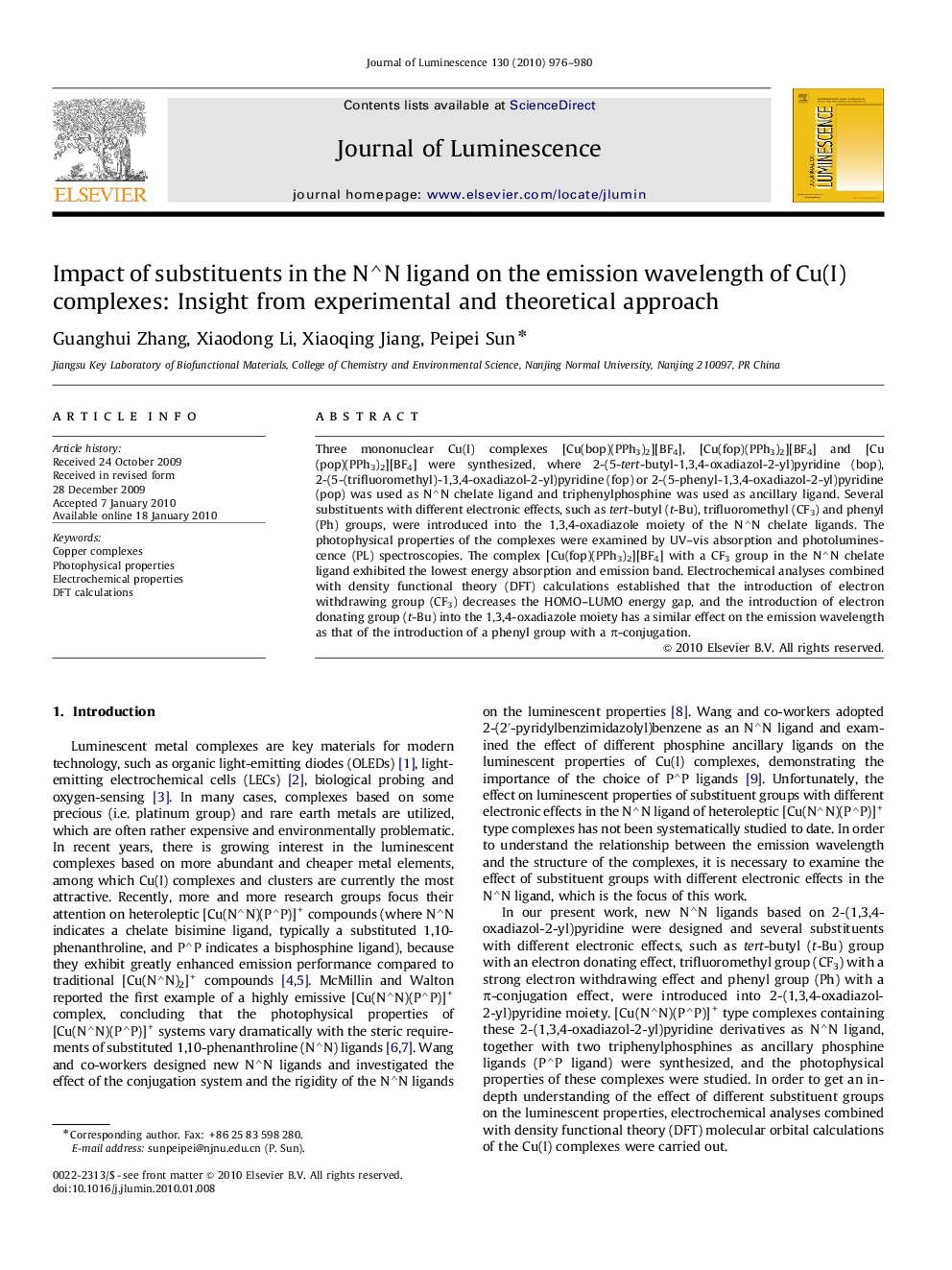| Article ID | Journal | Published Year | Pages | File Type |
|---|---|---|---|---|
| 5402765 | Journal of Luminescence | 2010 | 5 Pages |
Abstract
Three mononuclear Cu(I) complexes [Cu(bop)(PPh3)2][BF4], [Cu(fop)(PPh3)2][BF4] and [Cu (pop)(PPh3)2][BF4] were synthesized, where 2-(5-tert-butyl-1,3,4-oxadiazol-2-yl)pyridine (bop), 2-(5-(trifluoromethyl)-1,3,4-oxadiazol-2-yl)pyridine (fop) or 2-(5-phenyl-1,3,4-oxadiazol-2-yl)pyridine (pop) was used as Nâ§N chelate ligand and triphenylphosphine was used as ancillary ligand. Several substituents with different electronic effects, such as tert-butyl (t-Bu), trifluoromethyl (CF3) and phenyl (Ph) groups, were introduced into the 1,3,4-oxadiazole moiety of the Nâ§N chelate ligands. The photophysical properties of the complexes were examined by UV-vis absorption and photoluminescence (PL) spectroscopies. The complex [Cu(fop)(PPh3)2][BF4] with a CF3 group in the Nâ§N chelate ligand exhibited the lowest energy absorption and emission band. Electrochemical analyses combined with density functional theory (DFT) calculations established that the introduction of electron withdrawing group (CF3) decreases the HOMO-LUMO energy gap, and the introduction of electron donating group (t-Bu) into the 1,3,4-oxadiazole moiety has a similar effect on the emission wavelength as that of the introduction of a phenyl group with a Ï-conjugation.
Related Topics
Physical Sciences and Engineering
Chemistry
Physical and Theoretical Chemistry
Authors
Guanghui Zhang, Xiaodong Li, Xiaoqing Jiang, Peipei Sun,
